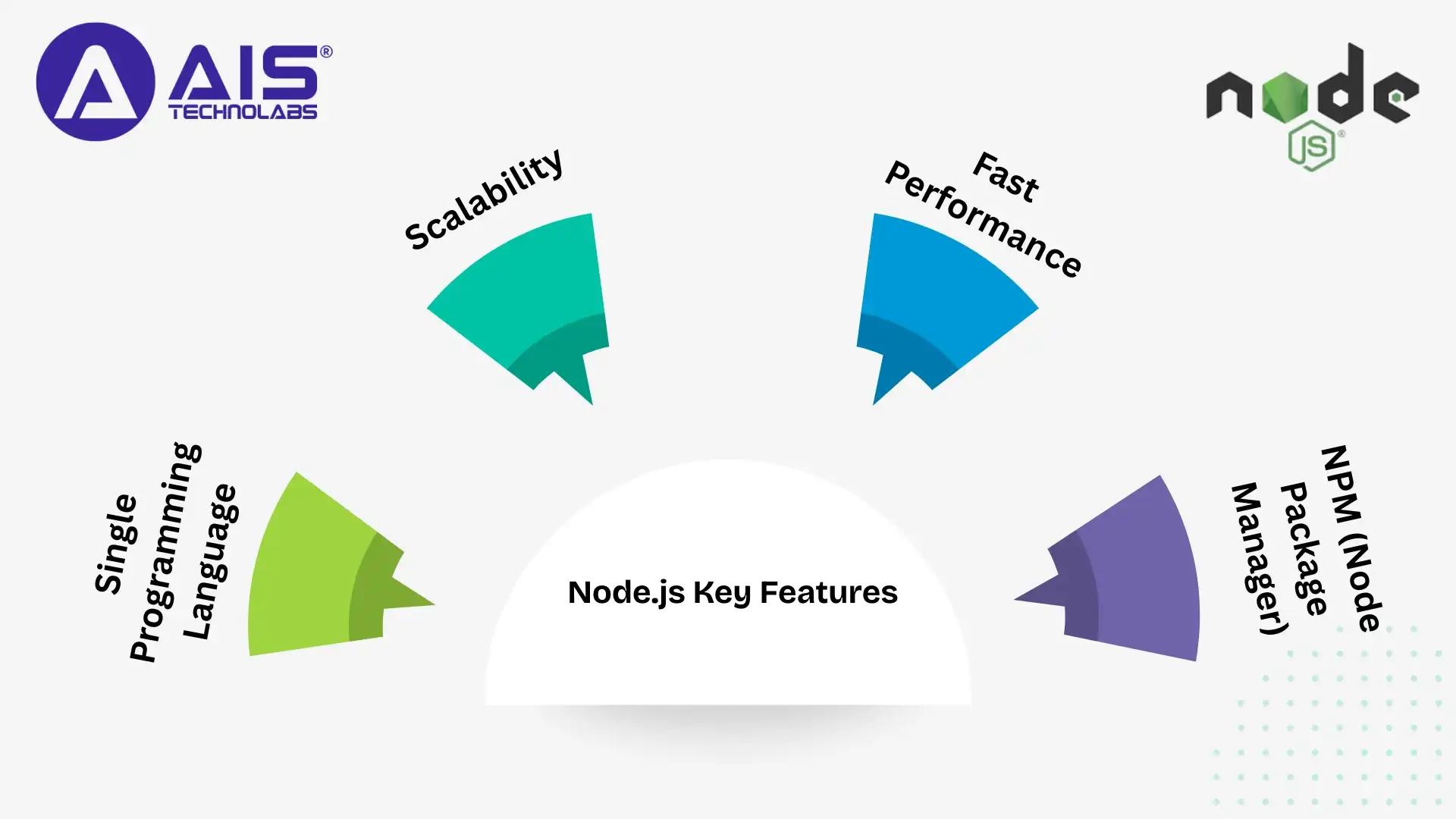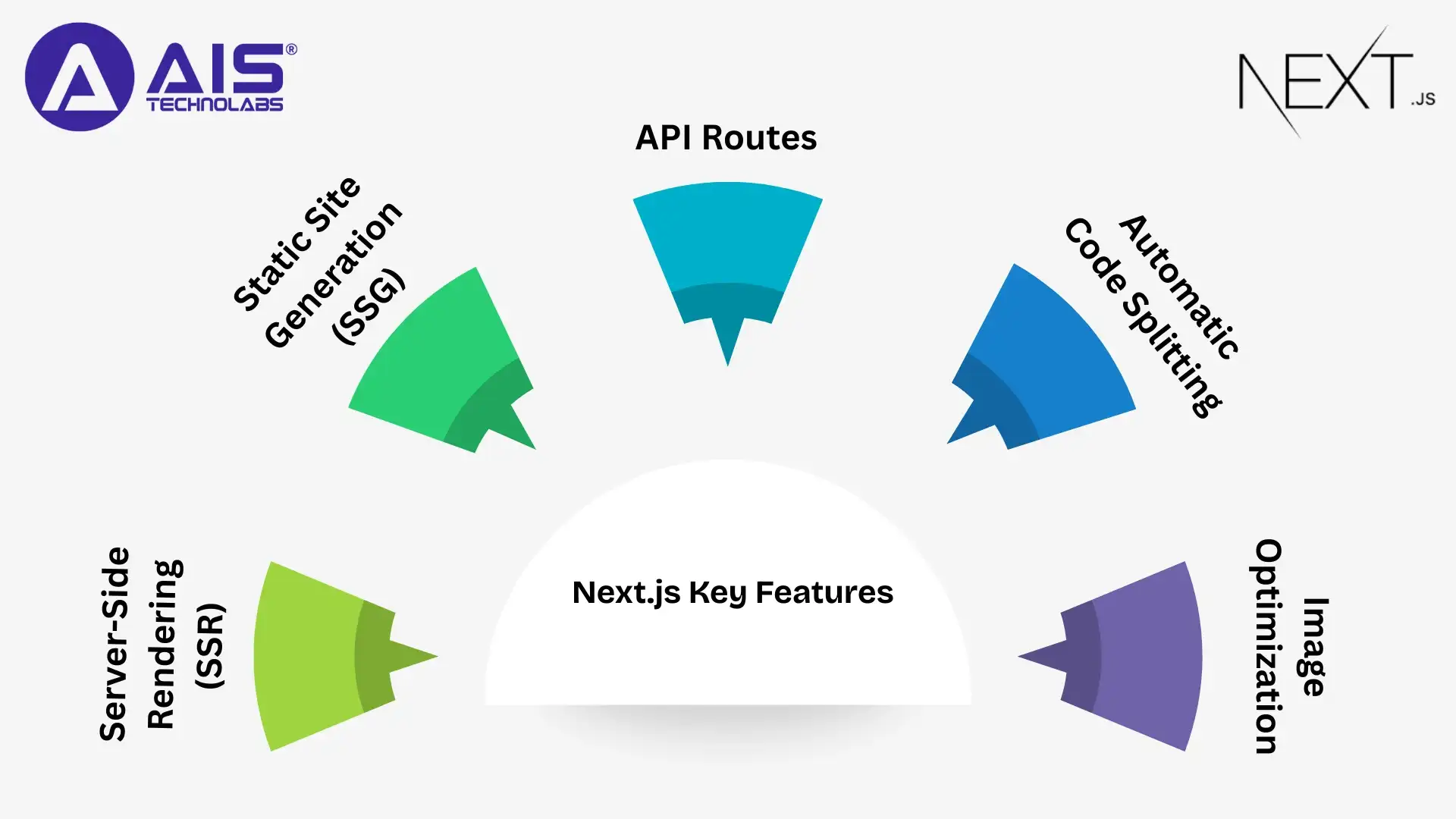Table of Content
(506 views)

Introduction
Selecting the right tools and frameworks is of paramount importance in web development. Next.js and Node.js, and JavaScript are three names that frequently pop up when talking about modern web development. Even though both are popular beyond imagination, they have different functions within the web development ecosystem.
For developers who want to create robust and effective applications, it is very important to know the differences among them, the cases of their application, and the way they can be included in web development frameworks.
Next.js vs Node.js, revealing what each framework accomplishes, their differences, and the areas of frontend, backend, and server side rendering where they are most beneficial.
What is Node.js?
Node.js is an extremely powerful framework for backend development that allows programmers to develop applications that are both scalable and of high performance with the use of JavaScript. In contrast to the classic backend technologies, Node.js works in an event-driven manner, and that is why it is the perfect choice for real-time applications and I/O-heavy operations that usually require a lot of waiting periods (asynchronous operations) to be done.
Node.js employs the same JavaScript engine as Chrome, specifically V8, which allows for a seamless execution of JavaScript on the server side which in turn means that the language is no longer restricted to the client-side. This feature allows companies to find and hire Node.js developers who can handle creating anything from simple RESTful APIs to complex microservices thus making Node.js one of the ultimate technologies for today's backend development.
Node.js Key Features:

Asynchronous and Event-Driven: Node.js's non-blocking feature allows processing of several requests at the same time without letting one finish first before the next one gets started. Therefore, apps that demand fast processing can be perfectly served by such a system as chat, video or other collaborative platforms.
- Single Programming Language: Entire development including both the application’s front and back end can be done in JavaScript, thus making the development even more smooth and seamless.
- NPM (Node Package Manager): Thanks to the NPM, the Node.js community has created a vast pool of open-source packages that can be used for augmenting an application with little effort.
- Scalability: The architecture of Node.js allows for unlimited scaling; it can deal with thousands of connections at the same time with little overhead. That is why it is a perfect choice for those applications which need instant scaling.
- Fast Performance: The V8 engine plays a key role in providing speedy execution and thus, makes Node.js perfect for performance demanding applications.
What is Next.js?
Next.js is an extremely popular and well-regarded frontend development framework that is built on React, which is one of the greatest JavaScript libraries for UI designing. Next.js, developed by Vercel, further enriches React with functionalities such as server side rendering, static site generation, and API routes, among others. It not only gives a more systematic approach in developing React applications, but at the same time, it is also the one that offers the highest performance and developer productivity.
Next.js comes with server side rendering (SSR) as one of its great features, through which pages will not just be rendered in the browser but also on the server. Consequently, the page loads will be faster, the SEO will be better, and the users will have a more pleasant experience.
Next.js Key Features:

- Server Side Rendering (SSR): Next.js provides the capability to render the web pages on the server rather than in the old-fashioned React apps, which have rendering in the browser. Next.js server side rendering leads to faster initial loading and thus better SEO performance.
- Static Site Generation (SSG): Next.js gives developers the power to pre-render pages at the moment of building, which can be later served as static files. This delivers fast websites and a huge drop in server load.
- API Routes: The API routes in Next.js bring about the possibility of introducing backend functionality right inside your project. This means that you can get rid of separate backend server management, thus making the development process more efficient.
- Automatic Code Splitting: Users download only the JavaScript for the current page while Next.js does the rest and splits your code automatically. The performance of the app is thus improved.
- Image Optimization: The image optimization features in Next.js are sophisticated, & now images can be resized, compressed, and served in the most suitable format.
Key Differences: Next.js vs Node.js
Next.js vs Node.js may be both applied and seen in modern web development frameworks, but they are very different in their very nature. Two of them are compared as below:
Node.js absolutely should be your choice if:
- One of the application features that you want is real-time: Node.js is the technology of choice for real-time applications, such as chat, notifications, or live collaboration tools, due to its event-driven architecture.
- You are a JavaScript supporter: If you are planning to go with JavaScript for both client and server, Node.js is the one that will provide you with a seamless development experience, thus allowing you to write the entire app in one language.
- You are in search of microservices-based architecture: Developers are usually inclined towards Node.js when it comes to microservices-based architecture due to its lightweight and scalability features.
Use Next.js if:
- If you are already working with React for the frontend, then Next.js is the logical extension of your choice. It gives you the complete set of tools required in order to create web applications that are ready for the production stage, SEO-optimized, and have fast loading times.
- SEO is one of the project requirements, and server-side (SSR) is the rendering method you are going for: In case SEO is a major concern for your project and it needs server side rendering to be indexed by the search engines through better rendering, then Next. js is the right tool for that.
- Static site generation (SSG) is your ultimate choice: With Next.js, you can quickly create a static website with very fast loading times, as it allows you to render pages in advance at build time.
You want a complete solution: If you are searching for a straightforward way to develop the frontend and backend of your web application, Next.js lets you route APIs right inside of your project, thus making the development process more efficient.
Struggling To Develop A Website With High-Performing SEO?
Next.js vs Node.js Performance Compared
Performance is a matter of concern beyond the technical aspect; it is one of the factors that help you to distinguish yourself in the market. Recent surveys of developers and usage trends show that Node.js and Next.js are the ones that are getting the most praise, and their performance characteristics are highly important in modern web applications. Node.js still holds the title of the fastest and most efficient server-side technology, while Next.js is becoming the most preferred framework for frontend rendering performance.
- Node.js usage: ~40.8% of developers use Node.js, according to the 2024 Stack Overflow survey.
- Next.js usage: ~17.9% developer adoption in the same survey.
- Node.js impact: According to the current status of Node.js, it can reduce loading times by 50–60%, which is a strong case for backend efficiency.
- Performance trade-off: Next. JS enhances front-end performance through pre-rendering (SSR, SSG) and code splitting—bringing down Time to First Byte (TTFB) and making the speed better perceived by the user.
- The first-loading performance is now at the top of concerns for developers, most of whom implement Next.js, which is search engine optimization (SEO)-friendly.
- On the backend, scalability & handling concurrent requests efficiently are top concerns—Node.js is highly valued for that.
- Surveys reveal that JavaScript runtime tools remain the most popular, and JavaScript itself is still topping the charts for developer use.
- The need for such frameworks is increasing, which would lead to the reduction of infrastructure costs—Next.js offers faster page rendering, while Node.js provides an efficient backend, which together result in reduced server load and lesser compute requirements.
- If you build high-traffic, SEO-sensitive websites, Next.js offers frontend performance that helps reduce bounce rates.
- For backend-heavy systems (APIs, microservices) with many simultaneous users, Node.js provides efficiency and speed at scale.
The best stack—from a performance and market standpoint—often uses Node.js for backend and Next.js for frontend rendering.
The combination of quick frontend development, flexible backend development, and powerful server-side rendering guarantees that your application will be able to handle the actual demand without any performance issues.
Scalability Differences Between Next.js and Node.js
Scalability is a business issue and not merely a technical one. The selection of a suitable framework will have an impact on the costs of the infrastructure, its dependability, and its performance as web applications increase in user traffic and complexity all at once. Market & research developer surveys have been able to point out the scaling potentials of Node.js and Next.js, as well as the applications that can benefit the most from each.
Modern scalability needs:
Scalability has become one of the most important criteria when deciding on a development stack in the current market. Companies assume that their applications will support sudden and high traffic, serve users from different parts of the world, and deliver content quickly without raising the costs of the servers.
Node.js scalability strength
Node.js backend scales remarkably well because of its event-driven, non-blocking architecture. That's why it's a perfect choice for high-concurrency applications such as APIs, real-time systems, and microservices.
Next.js scalability strength
Next.js leverages the application of SSG, ISR, and CDN delivery to scale up at the front end. The combination of these methods allows Next.js to serve pages that are already rendered to millions of users and thus keep the server load very low.
Market trend insight
According to the current industry trends, it is noticeable that hybrid framework adoption is increasing, and Next.js is one of them, whereas Node.js is still the most preferred choice for backend scaling—thus, both are necessary in the present-day scalable architectures.
Conclusion
Next.js and Node.js are not in direct competition, as they support each other in full-stack web development. Node.js is the perfect choice for backend development, API building, and large-scale application handling. Next.js, on the other hand, provides server side rendering, static site generation, and a smoother development process for React-based frontend applications.
Next.js is the best option for fast, SEO-friendly frontend projects, while Node.js is the best option for any kind of backend logic, real-time apps, or API creation. However, by combining both tools, developers can easily create full-stack applications that are scalable and maintainable. Whether you're enhancing frontend performance or building reliable backend systems, AIS Technolabs helps deliver modern, high-performance web applications.
FAQs
Ans.
Node.js is a JavaScript runtime that lets you run JS on the server. It is ideal for building scalable backends, APIs, and real-time applications.
Ans.
Next.js is a React-based framework for building full-stack web apps. It offers routing, server-side rendering, and optimization tools out of the box.
Ans.
Node.js is a low-level runtime for server-side JS, while Next.js is a higher-level framework built on top of it. Both sit within modern web development framework choices.
Ans.
Beginners often start with Node.js to learn backend basics, then move to Next.js for full-stack projects. Your choice depends on whether you need a UI or just an API.
Ans.
Yes, you can use Next.js for the frontend and Node.js for custom backend services. They integrate smoothly through API routes or separate microservices.